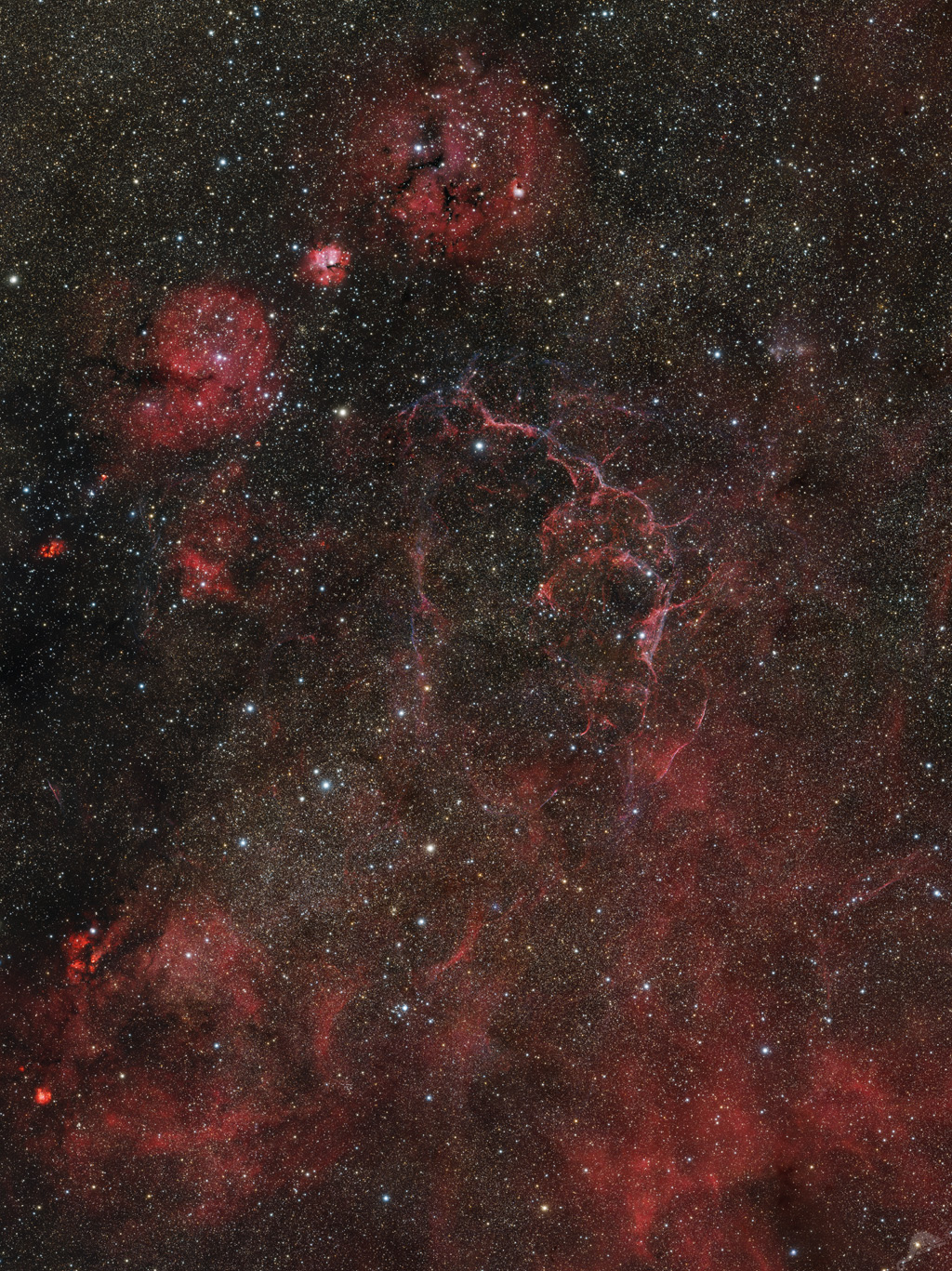 |
CHAMÄLEON + ONJALA OBSERVATORY DeepSky | SITEMAP HOME CHAMÄLEON |
|
 |
|||
| « zurück zur Startseite
galaktische Nebel « back to home galactic nebula |
Großes Bild laden - load large
image 2048 x 4000 Pixel Aufnahmedaten Image data |
The Vela supernova remnant in a wide-angle overview

Der Vela Supernovaüberrest -
unser Bild zeigt ein Mosaik bestehend aus 8
einzelnen Segmenten - in einer Weitwinkelansicht. Das Bild überdeckt etwa
8 x 11 Grad, also knapp 90 Quadratgrad.
Entstanden ist diese Region im
Sternbild Vela (Segel des Schiffs) durch ist eine Supernova, die 1.000
Lichtjahre vom Sonnensystem entfernt vor etwa 12.000 Jahren explodiert ist. Bei
diesem Ereignis ist aus dem Vorgängerstern von 8-10 Sonnenmassen der
Vela-Pulsar (PSR J0835-4510) und aus dem dabei
abgestoßenen Gas ein sich ausdehnender, wolkenartiger
Supernovaüberrest entstanden.
John Herschel entdeckte im Jahr 1835
das erste Filament des Nebels, der als NGC 2736
katalogisiert ist und den populären Namen "Bleistiftnebel" trägt. Ein
hoch aufgelöstes Bild von NGC 2736
zeigen wir hier.
Im oberen Bildbereich liegen 3
H-II Sternentstehungsgebiete, die in Gesamtheit als GUM
15 katalogisiert sind. Als Einzelobjekte werden sie von Südost
(links im Bild) nach Nordwest als RCW 33, RCW 32 (Ced 106 N) und RCW 27
bezeichnet. Hier zeigen wir einige hoch aufgelösten Bilder von
RCW 36,
RCW 38,
RCW 40 und
RCW 32 (Ced 106 N).
 |
Object
description « Klicken Sie hier oder auf das Vorschaubild zum Laden eines großen Bildes mit Objektbezeichnungen. « Click here or on the thumbnail to load a large image with object annotations. |
The Vela supernova remnant in a wide-angle overview - download 4096 x 5.500 pixel version
Image data
Some nights in May 2022 and Mai 202y - RGB: 59 x 600 s and H-alpha (7nm): 68 x 600 s, ZWO ASI 071 Pro - Color (cooled)
Telescope: William RedCat 51 APO 250 mm f/4,9 Flatfield
Location: Chamäleon Observatory, Onjala Lodge, Namibia
Image acquisition and processing: DeepSkyStacker, PixInsight + Photoshop
Center coordinates approx.: RA 08h 37m 30s / DE - 43 46 00
 |
 |
 |
 |
 |
 |
 |
| Sonne | Mond | Sonnensystem | DeepSky | Weitwinkel | Verschiedenes | Spez. Projekte |